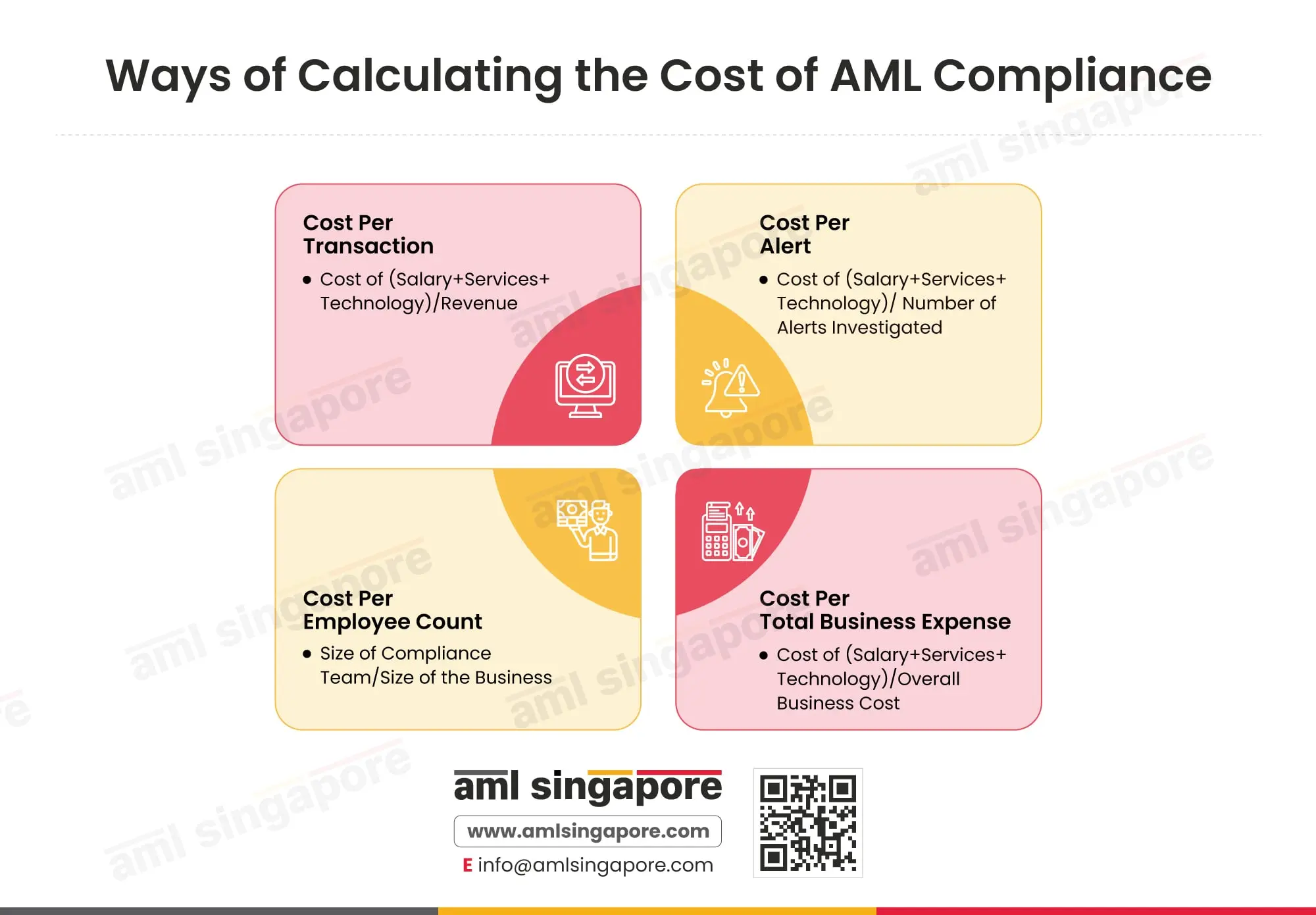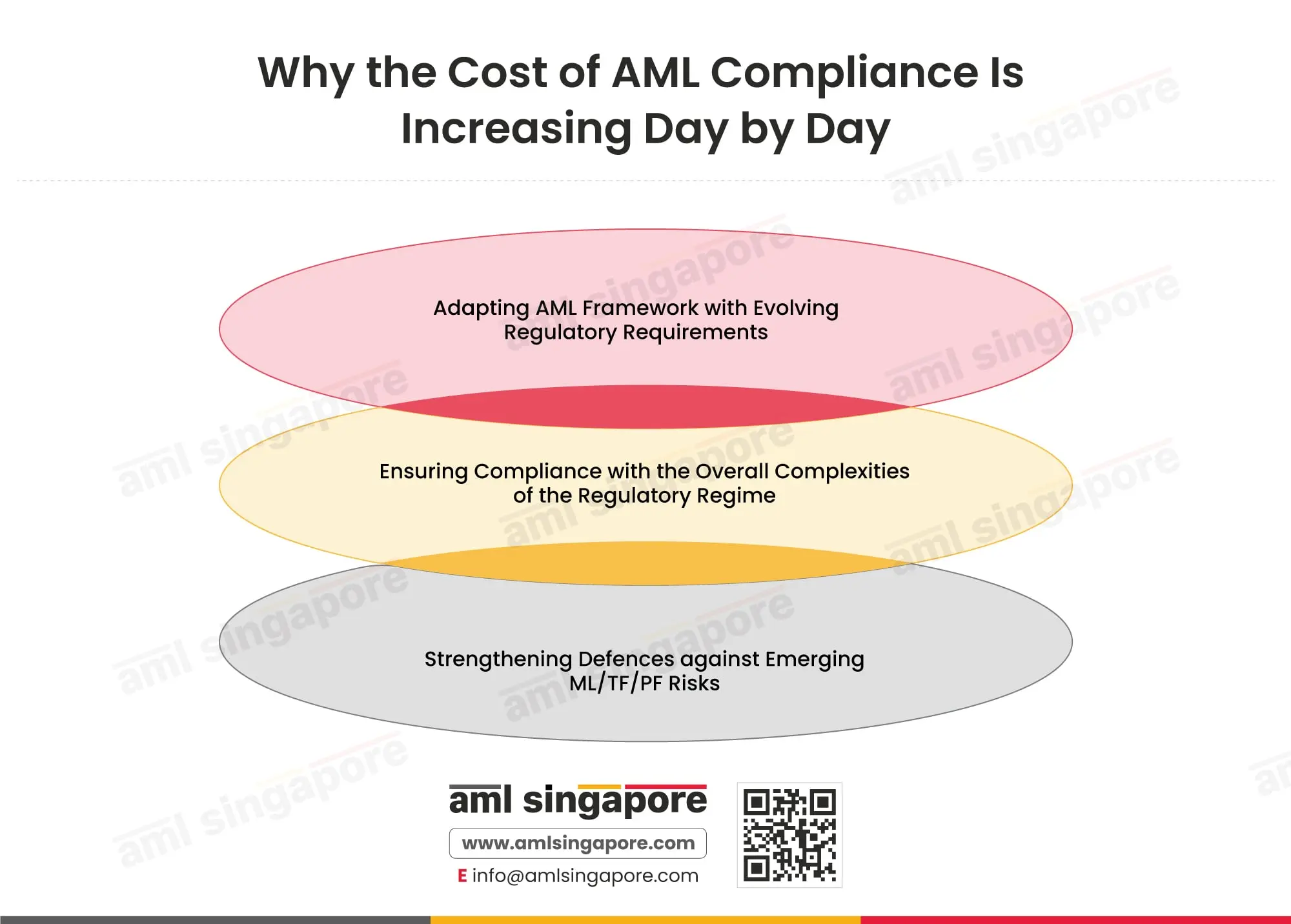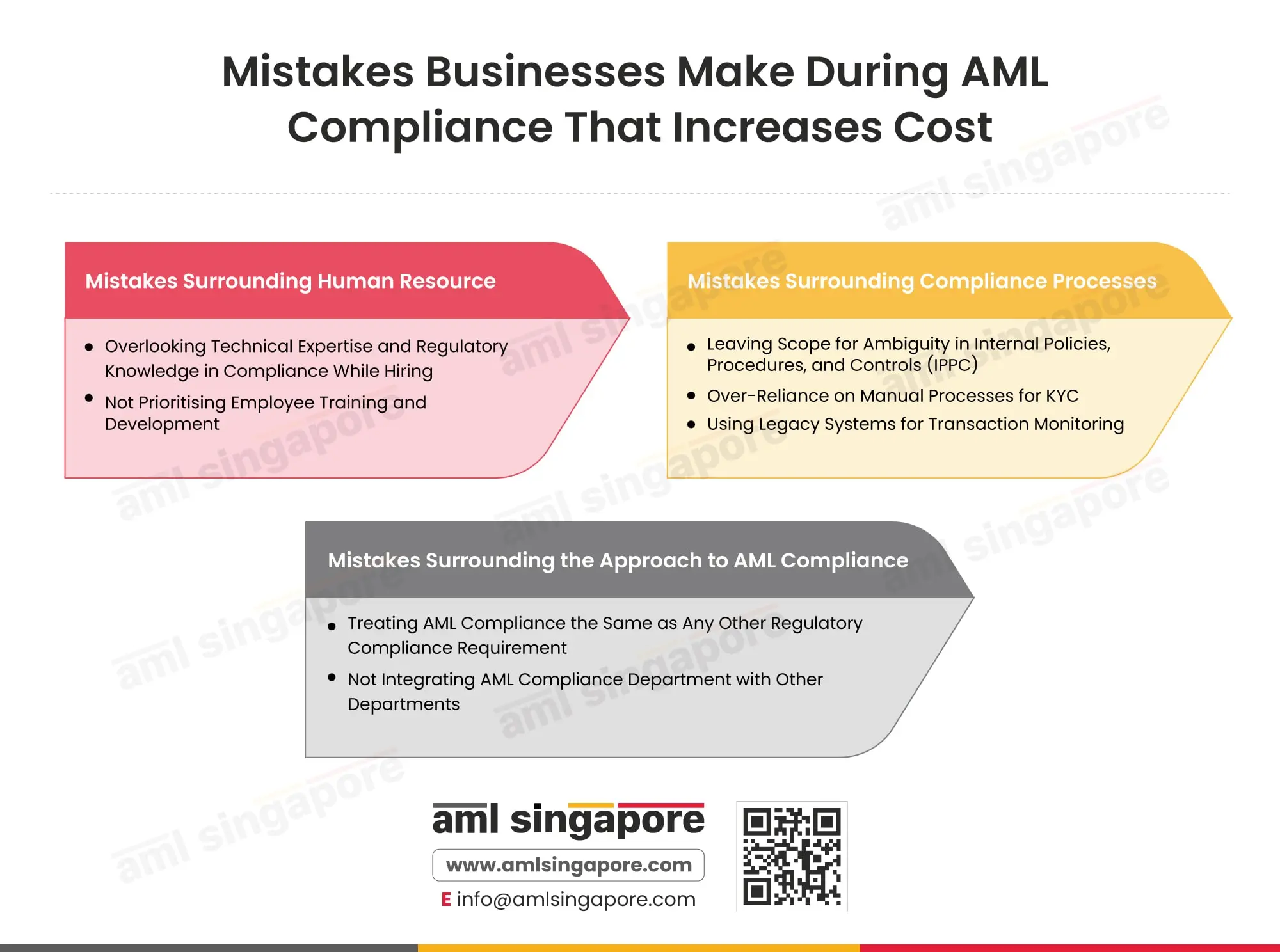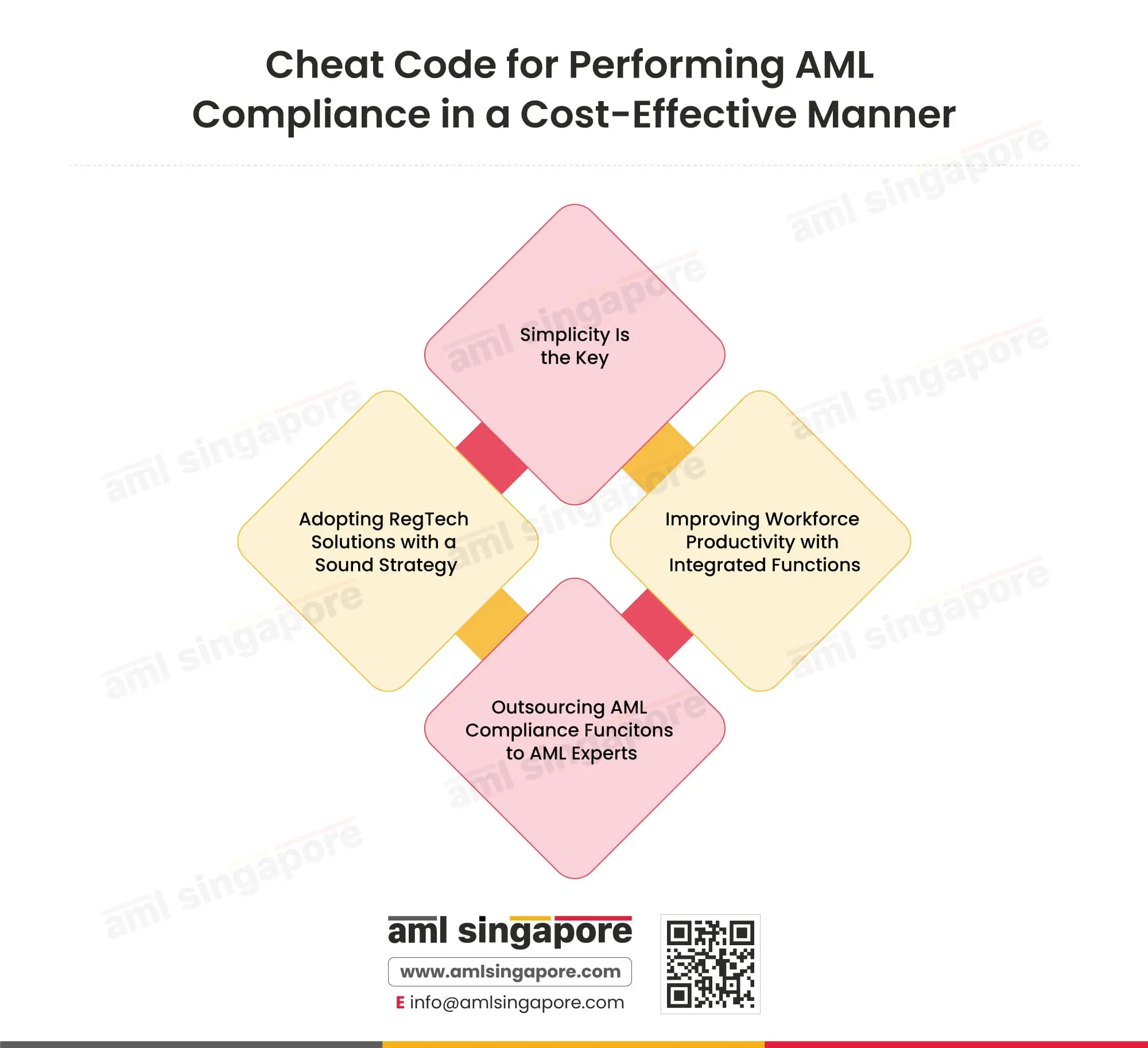How to Cut Costs without Compromising Compliance in AML
How to Cut Costs without Compromising Compliance in AML
The cost of Financial Crime Compliance is increasing day by day, putting a strain on the balance sheets and profits of businesses. This blog addresses the key challenges faced by regulated entities in Singapore, like financial institutions and Designated Non-Financial Businesses and Professions (DNFBPs), and shares insights on how to cut costs without compromising compliance in AML.
Ways of Calculating the Cost of AML Compliance
There are different ways to arrive at the AML compliance cost. Here are a few ways in which businesses can calculate the cost of compliance:
Cost Per Transaction
One way of calculating the cost of compliance is by calculating the costs related to employee salary, software subscription costs, and other fixed and variable costs and dividing the same by the number of transactions to arrive at the cost per transaction.
Cost Per Alert
Some businesses also prefer to measure their compliance cost by determining the cost of investigating an alert. The overall cost of operating the compliance department is divided by the number of alerts generated to arrive at the cost per alert.
Cost Per Total Business Expense
Another way of calculating the cost of compliance is by determining the costs associated with the AML compliance department as a whole and comparing them with the overall cost that the business is taking.
Cost Per Employee Count
Here the total compliance cost is divided by the number of compliance staff to arrive at the cost per employee.
By this method, businesses can also compare their compliance cost with other businesses of the same size.
Upon doing a cost analysis of the business’s AML compliance functions, businesses should take the necessary steps to understand the core factors driving the cost of compliance.
Why the Cost of AML Compliance Is Increasing Day by Day
Besides the necessary costs associated with compliance, like the development of Internal Policies, Procedures, and Controls (IPPC) and setting up a compliance department, businesses are required to spend significant time and resources in the implementation and upgradation of their AML compliance framework to sustain themselves in an increasingly complex environment. There are multiple reasons to which the rise of compliance costs can be attributed, including:
Adapting AML Framework with Evolving Regulatory Requirements
The regulatory requirements are constantly evolving based on factors like the nation’s risk assessment, changing international norms, etc. To stay updated with the evolving regulatory requirements, businesses need to put in additional costs.
Ensuring Compliance with the Overall Complexities of the Regulatory Regime
The requirements under Anti-Money Laundering laws often intersect with data privacy requirements, transparency requirements, requirements concerning financial security, and investor protection requirements, which can further be vertically classified into regional, national, and international standards. Regulated entities often need to incur costs to comply with the complex set of regulatory requirements.
Strengthening Defences against Emerging ML/TF/PF Risks
While the AML Laws require regulated entities to adopt strict measures for preventing the risks of financial crimes, at times, the risk mitigation measures may not be sufficient for countering the emerging risks, for regulated entities need to put in more cost for using advanced technologies and resources for protecting themselves against emerging ML/TF/PF risks.
While there are some external factors that drive up the cost of compliance beyond any regulated entity’s control, it is important to understand the internal fallacies of a regulated entity’s AML compliance framework.
AML Compliance Without the Sticker Shock!
Say goodbye to hidden costs and hello to transparent, expert-led solutions
Mistakes Businesses Make During AML Compliance That Increases Cost
When undertaking AML compliance processes, businesses make their best efforts to combat the risks of financial crimes and adhere to the regulatory norms. However, they often end up making a few mistakes here and there, which increases the overall cost of AML compliance. Let’s take a look at some of the common mistakes:
Overlooking Technical Expertise and Regulatory Knowledge While Hiring
AML compliance requires a specialised understanding and knowledge of the regulations surrounding the prevention of financial crimes, like the FATF guidelines or the Terrorism (Suppression of Financing) Act 2002 and Corruption, Drug Trafficking and Other Serious Crimes (Confiscation of Benefits) Act 1992 and risk management practices like risk identification, assessment and mitigation.
Regulated businesses often hire personnel with no background in financial crime compliance for performing functions like customer due diligence, which can potentially increase the cost of compliance at a later stage, such as during AML audits or in the form of a fine imposed by regulatory authorities for improper compliance.
Treating AML Compliance the Same as Any Other Regulatory Compliance Requirement
This issue often stems from the first mistake of incorrect hiring. Personnel who do not have a sound understanding of the nature of AML compliance processes may treat AML compliance the same as any other regulatory compliance, thereby generating higher false positives or false negatives.
On the other hand, many businesses often expect their AML compliance teams to perform other compliance functions, such as tax compliance. Such uneven distribution of workload may also impact the team’s ability to perform an in-depth analysis of a customer’s behaviour or transactions during AML compliance.
This adds to the hidden cost that a business bears as the efficiency of compliance results in proportion to resources deployed.
Leaving Scope for Ambiguity in Internal Policies, Procedures, and Controls (IPPC)
Businesses sometimes focus on the broader aspects of IPPC without much deliberation on the flow of procedures like escalation of issues and reporting, leaving scope for ambiguity in roles and responsibilities.
This ambiguity can cause redundancy in work and inconsistency in the implementation of the Internal Policies, Procedures, and Controls, which may create bottlenecks in future operations, reducing the overall productivity of the business added to the further cost of policy updates and revisions.
Over-Reliance on Manual Processes for KYC
Many regulated businesses, even today, rely on manual processes for conducting KYC, often because it provides a sense of control. However, due to the over-reliance on manual processes, it becomes difficult for regulated businesses to identify complex ownership structures when dealing with customers who are legal entities or when identifying important attributes of a business.
Due to such operational challenges, regulated businesses have to incur additional expenses by deploying more resources, like external consultants, for manual reviews to overcome the challenges.
Using Legacy Systems for Transaction Monitoring
The transaction monitoring systems used by most regulated entities are not adequate for the modern risks of financial crimes as their data sets are often siloed and not flexible enough for changing compliance requirements. This increases operational and maintenance costs for regulated entities.
Not Prioritising Employee Training and Development
Businesses that do not focus on the training and development of their employees may miss out on making optimum use of their human resources. Issues like skill gaps, stagnation of ideas, and lack of competitive environment caused by lack of training can restrict a business from achieving 100% of its organisational goals.
This inefficient use of human resources adds up to the overall cost to the company.
Not Integrating AML Compliance Department with Other Departments
By not integrating the AML compliance department with other departments like front-line staff, legal department, IT department, etc., businesses cannot facilitate proper internal cooperation and information sharing within the organisation, which can hinder a smooth customer onboarding process and the business may even lose out on customers, impacting their revenue streams.
Ineffective systems add up to not just the financial cost but also operational and sometimes even reputational costs to the company.
Cheat Code for Performing AML Compliance in a Cost-Effective Manner
There are a few business practices that regulated entities can adopt to save and ensure AML compliance within a budget:
Simplicity Is the Key
Businesses often complicate their AML compliance processes by incorporating too many complex procedures and tools. More often than not, using the obligations set out in the AML regulations as blueprints for compliance processes eases the groundwork for the compliance officers when defining their compliance strategy. This clarity in compliance prevents the compliance team from impulsively relying on unnecessary tools or processes that may drain the business’s resources.
Adopting RegTech Solutions with a Sound Strategy
Regulated entities that are open to adopting emerging RegTech solutions for integrated compliance functions like KYC, Screening, transaction monitoring, and regulatory reporting stand at a better economic advantage.
However, there are many players in the RegTech sector who position themselves as the panacea to high-cost legacy systems.
Therefore, it is necessary for regulated entities to strategise their RegTech adoption journey, which includes an assessment of their existing process to understand their pain points, categorising their software requirements into must-have, should and unnecessary for prioritising compliance within a budget, selecting vendors with transparent pricing, and optimising internal systems for long term impact to achieve maximum cost efficiency.
Improving Workforce Productivity with Integrated Functions
By integrating compliance functions in a centralised system and providing training on different subjects, regulated entities can improve collaboration and eliminate redundancy. This goes a long way in improving workforce productivity, enabling employees to take up diverse sets of roles without the need for hiring additional human resources. Thereby saving costs for the regulated entity.
Outsourcing AML Compliance Functions to AML Experts
For small businesses that may not have the time and resources to find, hire, train and pay people to perform their AML compliance functions or cannot afford to dedicate special resources for creating, preparing, and implementing AML processes on a daily basis and do not wish to invest in 10 different types of compliance software and spend time on learning how to use it, outsourcing is a lucrative option that can save a lot of costs, allowing the regulated entities to focus on their core business operations.
AML Singapore's Cost-Effective Compliance Services
AML Singapore understands a business’s need to ensure AML compliance without hurting the pocket. Our comprehensive AML compliance solutions, like IPPC Documentation, Business Risk Assessment, KYC and CDD, Training, Regulatory Reporting, Software Selection, etc., allow businesses to follow all the regulatory requirements and protect themselves from the risks of financial crimes without any unnecessary or hidden costs.
Your Compliance Bill Shouldn't Feel Like a Fine
Let's build an AML strategy that doesn't cost a fortune
About the Author
Jyoti Maheshwari
CAMS, ACA
Jyoti has over 9 years of hands-on experience in regulatory compliance, policymaking, risk management, technology consultancy, and implementation. She holds vast experience with Anti-Money Laundering rules and regulations and helps companies deploy adequate mitigation measures and comply with legal requirements. Jyoti has been instrumental in optimizing business processes, documenting business requirements, preparing FRD, BRD, and SRS, and implementing IT solutions.






